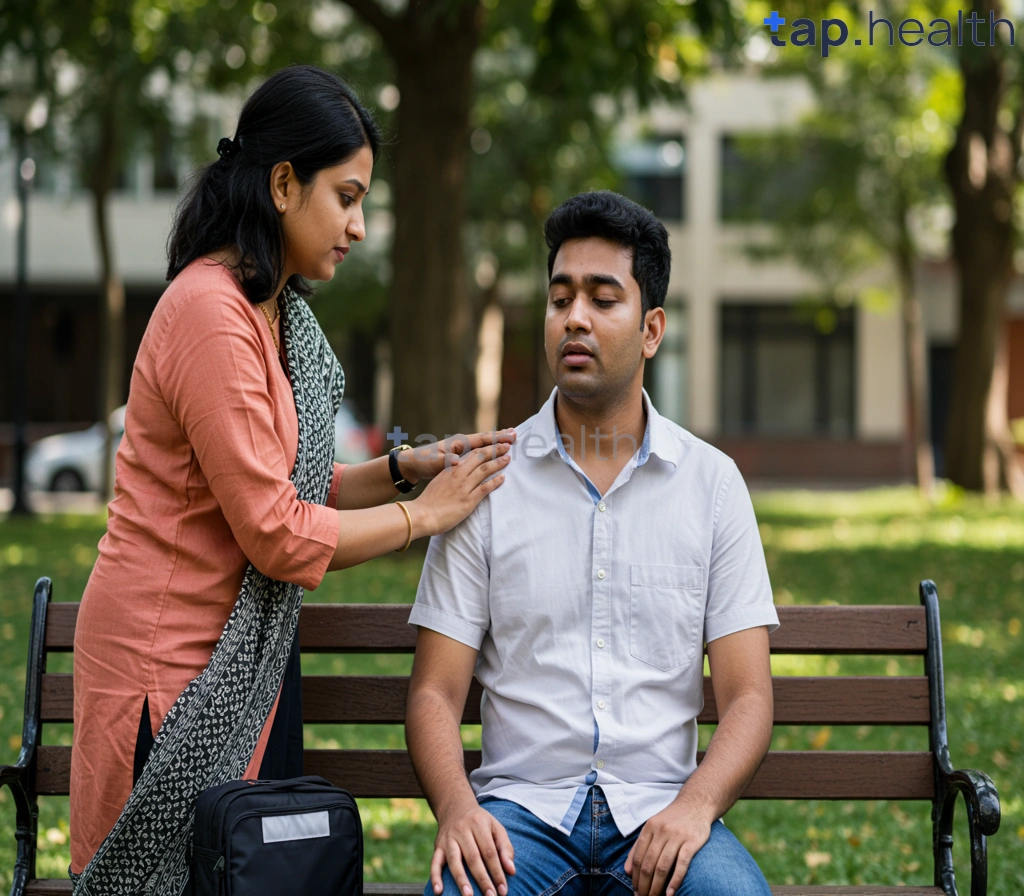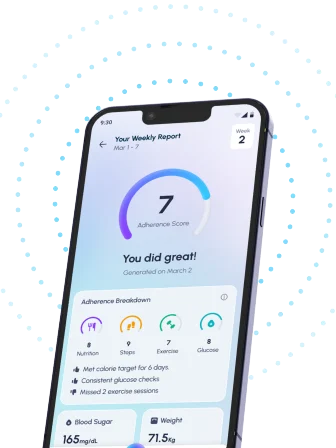Table of Contents
- Yoga and Diabetes: Finding Your Balance
- Managing Diabetes Through Yoga and Mindfulness
- A Beginner’s Guide to Yoga for Diabetes Control
- Yoga Poses for Improved Blood Sugar: A Step-by-Step Guide
- Is Yoga Effective for Diabetes Management? Discover the Benefits
- Frequently Asked Questions
- References
Living with diabetes can feel like a constant tightrope walk, juggling medication, diet, and blood sugar levels. But what if I told you there’s a powerful tool to help you find your balance and improve your overall well-being? This blog explores Finding Your Balance: Yoga for Diabetes Management, a holistic approach that can significantly benefit your health journey. We’ll delve into the specific ways yoga can help regulate blood sugar, reduce stress (a major contributor to diabetes complications), and improve your overall quality of life. Ready to discover how this ancient practice can empower you to take control of your diabetes?
Yoga and Diabetes: Finding Your Balance
Millions grapple with diabetes, a significant health concern, particularly in India and other tropical countries. A staggering 61% of those living with diabetes are between the ages of 20 and 64, while 39% are 65 and older, as highlighted by the International Diabetes Federation’s Diabetes Atlas. This underscores the urgent need for effective management strategies, and yoga offers a powerful, accessible solution.
The Benefits of Yoga for Diabetes Management
Yoga isn’t just about flexibility; it’s a holistic approach that positively impacts blood sugar levels, reduces stress (a key diabetes trigger), and improves overall well-being. Specific poses, or *asanas*, can stimulate insulin production, enhance circulation, and help regulate metabolism. Pranayama, or breathing exercises, further support this by reducing stress hormones like cortisol that can negatively impact blood sugar control. For individuals in India and tropical regions, the practice is particularly beneficial due to its adaptability to warm climates and its integration into traditional wellness practices.
Practical Yoga Tips for Diabetics
Start slowly. Begin with gentle poses like Sukhasana (easy pose) and Bhujangasana (cobra pose), gradually increasing intensity and duration as your strength and flexibility improve. Focus on breathing. Deep, conscious breathing is crucial for stress reduction and improved oxygen circulation. Consult a qualified instructor. Seek guidance from a yoga teacher experienced in working with people with diabetes, ensuring the practice is safe and effective for your specific needs and physical condition. Consider incorporating yoga into your daily routine, even for just 15-20 minutes, to experience its cumulative benefits. For those concerned about the challenges of managing diabetes as they age, Managing Diabetes as You Age: Challenges and Solutions offers valuable insights.
Finding Your Path to Better Health
Embracing yoga as a complementary therapy to your existing diabetes management plan can significantly enhance your quality of life. In the diverse landscapes of India and other tropical nations, integrating yoga into your daily routine is not only feasible but also deeply enriching. Begin your journey today and discover the transformative power of yoga for a healthier, balanced life. Find a local yoga instructor and start your practice today! Remember that addressing other health concerns, such as high blood pressure, is also important. Learn more about the natural benefits of yoga in managing this condition by reading Yoga: A Natural Solution for High Blood Pressure.
Managing Diabetes Through Yoga and Mindfulness
Managing diabetes effectively is crucial, especially in regions like India and other tropical countries where a significant portion of the diabetic population also faces hypertension. Over 60% of people with diabetes in India also have hypertension, highlighting the urgent need for holistic management strategies. This is where the power of yoga and mindfulness comes into play. Yoga isn’t just about physical postures; it’s a holistic practice that can positively impact blood sugar control, blood pressure, and overall well-being.
Yoga Asanas for Blood Sugar Regulation
Specific yoga asanas, or postures, can help regulate blood sugar levels. Forward bends like paschimottanasana (seated forward bend) and inversions like sarvangasana (shoulder stand) can stimulate the pancreas, improving insulin sensitivity. Gentle movements and breathing exercises help improve circulation and reduce stress, both of which are important in diabetes management. Remember to consult with your doctor or a qualified yoga instructor before starting any new exercise routine, especially if you have existing health conditions.
Mindfulness for Stress Reduction
Stress significantly impacts blood sugar levels. Mindfulness techniques, such as meditation and deep breathing exercises (pranayama), are integral components of yoga that can help manage stress effectively. Regular practice can reduce cortisol levels, a stress hormone that can elevate blood sugar. Incorporating even 10-15 minutes of daily mindfulness practice can significantly enhance your overall health and help in managing your diabetes more effectively. For more practical tips, check out our guide on 10 Proven Tips to Effectively Manage Diabetes.
Finding Your Balance in India and Beyond
For individuals in India and other tropical countries, integrating yoga and mindfulness into daily life offers a powerful, accessible, and culturally relevant approach to diabetes management. Start small, be consistent, and prioritize your well-being. By incorporating these practices, you can take control of your health and improve your quality of life. Remember to consult your healthcare provider to discuss how yoga and mindfulness can complement your existing diabetes treatment plan. Learning about additional management strategies can be really helpful, so consider reading our article on 10 Proven Tips for Effective Diabetes Management.
A Beginner’s Guide to Yoga for Diabetes Control
Managing diabetes, especially in hot and humid climates prevalent across India and other tropical countries, can present unique challenges. Approximately 35 per 10,000 U.S. youths have diagnosed diabetes, highlighting the global significance of this condition. This data underscores the urgent need for effective management strategies. Yoga offers a holistic approach, particularly beneficial in warmer regions where strenuous exercise might be less appealing.
Yoga Poses for Blood Sugar Balance
Gentle yoga practices, focusing on breathwork and mindful movement, can help regulate blood sugar levels. Pranayama, or breathing exercises, are crucial. Deep, controlled breathing helps reduce stress, a known factor in blood sugar fluctuations. Poses like Bhujangasana (Cobra Pose) and Marjaryasana (Cat Pose) gently stretch and strengthen the body, improving circulation. Remember to consult your doctor before starting any new exercise program, especially if you have diabetes.
Adapting Yoga to Tropical Climates
In hot and humid environments, modify your practice to avoid overheating. Practice early in the morning or in the evening when temperatures are cooler. Stay hydrated by drinking plenty of water before, during, and after your yoga session. Choose a well-ventilated space or practice outdoors in the shade. Listen to your body and rest when needed. Remember to avoid intense workouts during peak heat.
Starting Your Yoga Journey
Begin with short, beginner-friendly sessions, gradually increasing duration and intensity as you gain strength and flexibility. Focus on consistency rather than intensity. Even 15-20 minutes of daily practice can make a significant difference. Many online resources and local yoga studios in India and other tropical countries offer classes specifically designed for individuals with diabetes. Explore these options and begin your journey towards better diabetes management through the ancient practice of yoga. For further information on protecting your heart, a key concern for those with diabetes, you might find our article Protect Your Heart from Diabetes: 5 Essential Steps helpful. And if you’re planning any travel, check out our tips on Traveling with Diabetes: Essential Tips for a Safe & Healthy Journey before you go.
Yoga Poses for Improved Blood Sugar: A Step-by-Step Guide
Managing diabetes, especially in hot and humid climates common to India and other tropical countries, requires a holistic approach. Maintaining healthy blood sugar levels, ideally below 140/90 mmHg, as recommended by many guidelines (some even suggest below 130/80 mmHg), is crucial. Yoga offers a powerful, accessible tool to support this goal. Regular practice can improve insulin sensitivity and help regulate blood glucose.
Beginner-Friendly Poses:
Start with simple poses to build strength and flexibility. Tadasana (Mountain Pose) improves posture and grounding, while Bhujangasana (Cobra Pose) gently stretches the abdomen, aiding digestion and potentially blood sugar regulation. Remember to breathe deeply and consciously throughout each pose. Hold each pose for 30 seconds to one minute, gradually increasing the duration as you gain strength and comfort.
Intermediate Poses:
As your practice develops, incorporate poses like Trikonasana (Triangle Pose) and Adho Mukha Svanasana (Downward-Facing Dog). These poses improve circulation, which is vital for efficient glucose metabolism. Remember to listen to your body; avoid overexertion, especially in hot weather. Stay hydrated by drinking plenty of water, particularly before, during, and after your yoga session.
Important Considerations:
Always consult your doctor or a qualified yoga instructor before starting any new exercise regimen, especially if you have diabetes. Yoga complements, but doesn’t replace, medical advice and prescribed medications. In the Indian context, incorporating yoga into your daily routine can be a natural and culturally relevant method for managing diabetes alongside dietary changes and medication. This holistic approach can lead to better overall health and well-being. Find a local yoga class or explore online resources tailored for diabetes management to begin your journey towards better blood sugar control. For additional strategies, you might find Top 8 Natural Remedies to Improve Blood Sugar Levels helpful, and for immediate relief, check out 10 Tips for Immediate Blood Sugar Reduction.
Is Yoga Effective for Diabetes Management? Discover the Benefits
Diabetes is a growing concern, especially in regions like India and other tropical countries. With studies projecting a surge in diabetes cases in India from 77 million in 2019 to over 134 million by 2045, finding effective management strategies is crucial. Yoga, a practice deeply rooted in Indian culture, offers a holistic approach that may significantly benefit individuals managing diabetes.
Yoga’s Impact on Blood Sugar Control
Many yoga poses and breathing techniques can help regulate blood sugar levels. Specific asanas, like those focusing on forward bends and inversions, stimulate the pancreas and improve insulin sensitivity. Regular practice can contribute to better glucose metabolism, reducing the risk of blood sugar spikes and crashes. Furthermore, the stress-reducing aspects of yoga are invaluable, as chronic stress is a known factor exacerbating diabetes.
Beyond Blood Sugar: The Broader Benefits
The advantages of yoga extend beyond blood sugar control. It promotes weight management, a key component of diabetes management, by improving metabolism and increasing physical activity. This is complemented by the benefits of regular exercise, which is crucial for overall health and diabetes management. Yoga also enhances cardiovascular health, reduces inflammation, and improves overall well-being. These combined effects contribute to a healthier lifestyle, crucial for individuals living with diabetes in hot and humid climates where managing the condition can be particularly challenging.
Embracing Yoga for a Healthier Life
Incorporating yoga into your daily routine can be a powerful tool in managing diabetes. Start with gentle practices and gradually increase the intensity as your body adapts. Remember to consult your doctor or a certified yoga instructor, especially if you have any pre-existing health conditions. Prioritize consistent practice, and combine it with a balanced diet and regular exercise for optimal results. Embrace the ancient wisdom of yoga and take control of your diabetes journey today!
Frequently Asked Questions
Q1. What is the main benefit of practicing yoga for people with diabetes?
Yoga offers a holistic approach to managing diabetes by improving insulin sensitivity, regulating blood sugar, reducing stress (a major diabetes trigger), and boosting circulation and metabolism.
Q2. What type of yoga is recommended for beginners with diabetes, and how often should I practice?
Gentle poses like Sukhasana and Bhujangasana are suitable for beginners. It’s recommended to start with 15-20 minutes of daily practice, gradually increasing duration and intensity as you progress. Always consult a qualified yoga instructor.
Q3. Does yoga replace my regular diabetes management plan (diet, medication)?
No, yoga complements a comprehensive diabetes management plan. It should be integrated alongside medical advice, prescribed medication, and a healthy diet. It’s crucial to consult your doctor before starting any new exercise program.
Q4. How does yoga help reduce stress, a known trigger for high blood sugar?
Yoga incorporates mindfulness techniques and specific breathing exercises (pranayama) that help calm the mind and reduce the production of stress hormones, which directly impact blood sugar control.
Q5. What are some potential challenges or limitations of using yoga for diabetes management?
It’s essential to consult a qualified yoga instructor to learn proper techniques and avoid injury. Yoga is not a cure for diabetes and should be part of a broader approach that includes medical treatment and lifestyle adjustments.
References
- A Practical Guide to Integrated Type 2 Diabetes Care: https://www.hse.ie/eng/services/list/2/primarycare/east-coast-diabetes-service/management-of-type-2-diabetes/diabetes-and-pregnancy/icgp-guide-to-integrated-type-2.pdf
- Children with Diabetes : A resourse guide for families and school. : https://www.health.ny.gov/publications/0944.pdf




